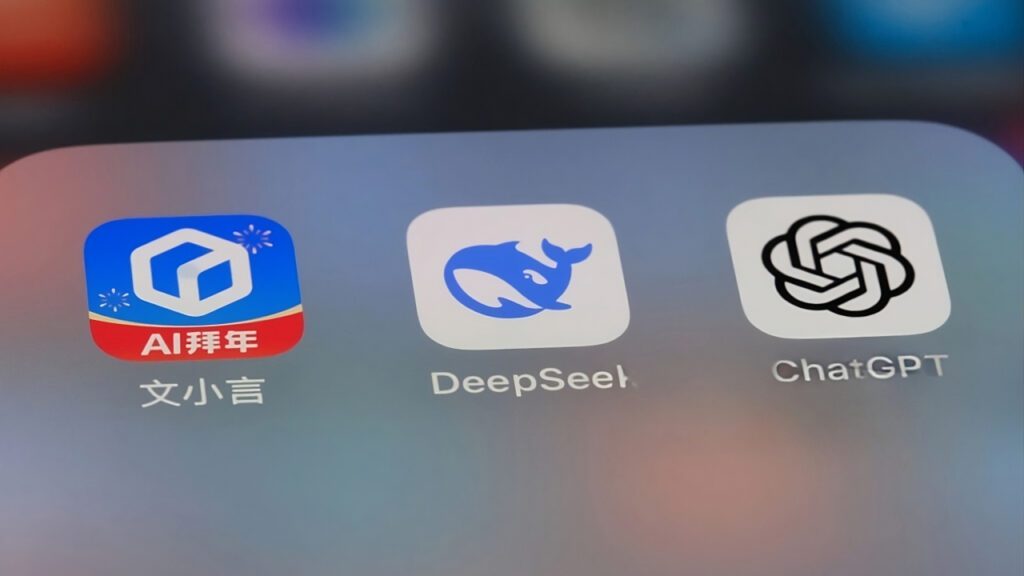
Writing, support, product work, research, even planning sessions move faster when an assistant thinks with you. That is when the conversation about deepseek vs chatgpt gets real.
These systems draft answers, explain code, summarize research and handle day-to-day tasks without fuss. They do not replace judgment, they extend it.
In this guide, you will see where each model shines, where it needs help and how to use both together without wasting a minute.
Let’s take it apart.
Table of Contents
ToggleThe Rise of Two Giants
OpenAI’s ChatGPT became the default choice for many teams because it handles a wide range of tasks with a steady voice. Its reach spans classrooms, newsrooms, startups and large enterprises. That scale created the baseline for any comparison that mentions deepseek vs chatgpt.
DeepSeek followed a different path. It grew as a chinese chatgpt with a clear intent. Focus on Mandarin, capture local nuance, then expand outward. This moves positioned DeepSeek as a practical chinese chatgpt competitor for companies that operate in China or work with Chinese speaking audiences every day.
It is not trying to be everything for everyone on day one. It is trying to be right for a very large group of users who prefer native phrasing, honorifics and tones that match expectations.
What DeepSeek Is
DeepSeek is a large language model built for human style conversation with a Chinese first mindset. It tracks context, answers with polite forms where they matter and handles idioms that feel natural to Mandarin speakers. It also supports other languages, yet its best performance appears when a chat unfolds in Chinese.
Key aims
- Serve as a dependable chinese chatgpt for service desks, education, and commerce
- Keep answers concise and culturally aware
- Allow enterprise teams to tune brand voice and common phrases
- Return responses quickly so agents and customers can move on
PRO TIP: If your audience is mostly Chinese, begin your experiments with DeepSeek. You will spend less time editing tone and more time solving the actual problem. That simple gain is why product managers keep raising deepseek vs chatgpt in weekly planning.
What ChatGPT Is
ChatGPT is a generalist that adapts to many jobs. It explains drafts, brainstorms and codes. It does this with a style that most readers understand without extra effort. Teams appreciate how it moves from email to specification to code sample to summary in the same thread.
Core strengths
- Long form drafting with structure and examples
- Explanations that teach as they answer
- Reliable help across multiple languages
- Deep support for programming tasks, tests and refactors
How DeepSeek Works in Practice
Under the hood, DeepSeek uses the same family of techniques that power most transformer models. The difference appears in what it prioritizes. The dataset puts more weight on Mandarin text, common idioms and social cues that shape how requests should be answered in Chinese.
This focus changes small choices that matter to users, such as when to soften a refusal or when to mirror a polite form.
A simple flow
- You write a prompt in Mandarin or mix languages.
- DeepSeek encodes the text, reads chat history and maps intent.
- It ranks possible replies that fit tone and context.
- It returns a clear answer, with phrasing that lands naturally for a Chinese reader.
- Feedback loops and fine-tuning update future outputs.
This is why the debate of deepseek vs chatgpt often splits by channel. Mandarin chat feels easier to manage with DeepSeek, while mixed language and technical work tends to lean on ChatGPT.
Core Differences You Should Know
Choosing well is not about a single winner. It is about what you need to do today.
- DeepSeek focuses on Chinese first performance and cultural fit.
- ChatGPT focuses on broad versatility and deep support for content and code.
- Together they cover most daily needs without heavy hand holding.
If your team serves Chinese customers in one channel and global users in another, the practical answer to is deepseek better than chatgpt becomes yes for the Mandarin queue and no for the global work. Context decides.
Head-to-Head Feature Comparison
| Feature | DeepSeek | ChatGPT |
| Primary focus | Mandarin and Chinese NLP optimization | Broad versatility across many languages |
| Strength zone | Cultural nuance and Chinese first responses | Creativity, coding, research and long form drafting |
| Speed profile | Often faster on Mandarin prompts | Even pace across languages and tasks |
| Customization | Localized templates and tone controls for Chinese enterprises | Flexible APIs and community playbooks for global industries |
| Adoption pattern | Rapid growth as a chinese chatgpt competitor | Dominant worldwide adoption |
| Best fit | Chinese support, education, commerce | Developers, global teams, multilingual projects |
Write down the destination of your output. If it goes straight to a Chinese social platform or a local chat app, DeepSeek usually reduces edits. If it must serve three audiences in three languages, ChatGPT keeps the work moving.
Speed and Performance in Daily Work
Speed counts when someone waits for you to reply live.
- DeepSeek responds quickly in Mandarin because the model prioritizes those patterns. That helps agent’s close tickets with fewer back and forth messages.
- ChatGPT stays steady across languages and complex prompts. It is a good fit for tasks that require several steps and longer reasoning.
FACT: In controlled pilot programs, support teams saw fewer clarifying questions when DeepSeek handled Mandarin chats. Documentation writers saw fewer rewrites when ChatGPT handled global English drafts. That split appears repeatedly in deepseek vs chatgpt scorecards.
Language Nuance and Cultural Fit
Words carry more than literal meaning. Tone and etiquette matter.
- DeepSeek handles polite forms, indirect refusals and festival references with ease. This is what many people expect from a chinese chatgpt designed for local audiences.
- ChatGPT can mirror tone across languages, yet it may sound more literal in detailed Mandarin exchanges. It excels when you shift to English, Spanish or French and you need depth plus examples.
This is a central reason analysts call DeepSeek a chinese chatgpt competitor. It feels right at home in conversations where small phrasing choices carry social weight.
Deepseek vs chatgpt for coding
Developers want a reliable partner that writes and explains code in clear steps. That is why the question deepseek vs chatgpt for coding keeps showing up in engineering chats.
What to expect
- ChatGPT generates functions, explains algorithms, writes tests, and reviews pull requests. It helps with Python, JavaScript, Java, Go and more. For most teams this becomes the default. That makes deepseek vs chatgpt for coding a practical comparison with a familiar result.
- DeepSeek can suggest simple scripts and correct minor issues. Its sweet spot remains language tasks, not multi file refactors. In a head-to-head test, deepseek vs chatgpt for coding often ends with ChatGPT winning on speed and completeness.
Use ChatGPT for the code, then let DeepSeek summarize the change in Mandarin for a stakeholder update. That two-step routine turns deepseek vs chatgpt for coding into a coordinated workflow rather than an argument. In team retrospectives, engineers still state that deepseek vs chatgpt for coding has a clear leader, yet the combination saves time.
Adoption, Governance and Data Residency
Enterprises choose assistants with policy in mind.
- Some organizations want a domestic option for Chinese data. For them, a chinese chatgpt competitor like DeepSeek can reduce review cycles because it aligns with residency preferences.
- Global firms lean toward tools with large ecosystems and connectors. ChatGPT fits this pattern across many industries.
Guardrails that help
- Remove sensitive details from prompts when possible
- Keep a glossary for product names and phrases
- Log final outputs for regulated teams
- Decide who approves final wording before release
These habits improve results whether you pick DeepSeek, ChatGPT or both. They also make is deepseek better than chatgpt an easier question because you can measure outcomes under the same rules.
Table: When to Use Each Model
| Scenario | Better choice | Why |
| Chinese customer support | DeepSeek | Cultural nuance and faster Mandarin reply |
| Global content creation | ChatGPT | Strong drafting in English and other languages |
| Software development | ChatGPT | Advanced generation, tests and debugging |
| Marketing in China | DeepSeek | Phrasing and tone that match local platforms |
| Multilingual research | ChatGPT | Even performance across languages and sources |
| Bilingual ops updates | Both | ChatGPT writes the plan, DeepSeek adapts it for Mandarin readers |
PRO TIP: The clever move is to route tasks by strength. This is how teams answer is deepseek better than chatgpt without debate. They track results, then let the data assign the next task.
Evaluation Playbook and Benchmarks
A fair comparison needs repeatable steps that reflect real work, not only headline scores.
- List five tasks per channel. Include Mandarin chat, English documentation and one code item.
- Write short prompts with audience, tone, and constraints.
- Run each task twice per model, then average results.
- Score clarity, correctness, tone, and edits required.
- Record time to first usable draft.
The first week gives a baseline for deepseek vs chatgpt. The second week shows improvement as prompts get better. After a month you will know how to answer, is deepseek better than chatgpt for your mix of tasks.
Research note: Teams that kept a one-page prompt guide improved outcomes faster than teams that did ad hoc tests. That pattern is held for DeepSeek in Mandarin channels and for ChatGPT in global context.
Final Comparison Table
| Factor | DeepSeek | ChatGPT |
| Primary strength | Chinese first optimization and cultural nuance | Global versatility, coding and creativity |
| Speed in Mandarin | Often faster on local prompts | Consistent pace worldwide |
| Accuracy | Best on Chinese text and context | Best on multilingual and technical tasks |
| Coding | Basic support | Advanced generation and debugging |
| Customization | Strong for Chinese enterprises | Broad integrations through APIs and plugins |
| Ecosystem | Growing as a chinese chatgpt competitor | Very large and mature globally |
| Best fit | Chinese businesses and localized workflows | Developers, global teams, multilingual projects |
Final Thoughts
There is no single champion for every task. The smart way to approach deepseek vs chatgpt is to map your real channels, then assign the right assistant to each. Use DeepSeek when Mandarin tone and cultural nuance decide success. Use ChatGPT when you need range, code and long form structure that serves many audiences.
Keep a shared glossary, a short prompt guide and a simple approval step. Those small habits do more for quality than any headline metric and they turn either model into a steady partner.
If you manage both tools with clear routing, the question is deepseek better than chatgpt becomes easy to answer. It is better where tone and local context rule. ChatGPT is better where coverage and creation matter most. Together they make teams faster, calmer and much more consistent.


